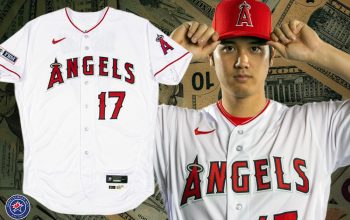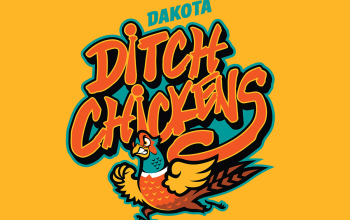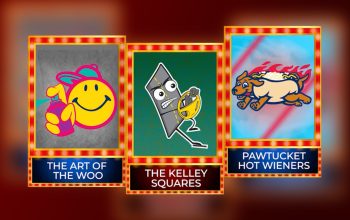
Recent conversations about the use of Native American imagery in sports brands have been adversarial, at best. The now-former name of the football team in Washington, DC, was an actual racial slur. The Cleveland Indians used a cartoon caricature of a Native American as a logo for decades. Fans of the Atlanta Braves and Kansas City Chiefs cheer their teams on with stereotyped war chants and wear culturally appropriated head dresses and war paint to games.
It’s enough to make you ask, is it possible to base a sports team name on Native culture in a constructive, appropriate way?
While these national conversations about Native American sports brands have been taking place—in some ways for generations but more intensely the last few weeks—a minor league baseball team in eastern Washington has been quietly been doing it right. The short-season Class-A Spokane Indians, who have been around in various forms since 1903, have established a close partnership with the Spokane Tribe of Indians, whose ancestors inhabited parts of what is now Washington, Idaho, and Montana.
“Today’s relationship with the tribe is excellent, and has been for a number of years,” said Otto Klein, the team’s senior vice president. “We meet with tribal council once and sometimes twice a year…. I think that’s the thing that’s setting us apart. We ask a lot of questions. We’re very good at listening. We think together and we work together. Each year when we get together for our meetings, we have an agenda, and part of it is a brainstorming session.”

The team’s brand has undergone a handful of updates and revisions in recent years, each of which took place with the blessing and participation of the tribe. The first came in 2006, when the team put everything on the table, including the team name, in conversations about rebranding.
“We met with council at the very beginning and we said, okay, the baseball team, we would like to change our logo, and before we do that, we want to ask you, are you still okay with the name of the Spokane Indians?” Otto Klein said. “They overwhelmingly said yes, we love having the baseball team named the Spokane Indians and we want to continue together.”
Working with the tribe and a relatively new design firm called Plan B (who would later become Brandiose), the team developed two versions of a roundel logo—one in English and the other in the tribe’s language, Salish. In creating the brand, the team, the design firm, and the tribe worked together. The Indians further raised awareness of the Spokane Tribe’s culture by posting signs in the ballpark in both English and Salish.
“A handful of people can actually read or write Salish,” said Jason Klein (no relation) of Brandiose. “This idea that you would spend an inordinate amount of time and energy and effort not only translating it but spending the money to put it up shows a real commitment from the club.”

In developing the brand, it was critical for everyone involved that the new look was authentic and respectful to the subject matter at hand.
“You have a choice. You can do it with arrogance and appropriation, or you can do it with humility and collaboration,” Jason Klein said. “If our job is to be storytellers, and the history of this name, the subject matter, is the Spokane Tribe of Indians, then that’s the story we need to tell, and we need to go to them and say, let’s tell your story.”

While some historical iterations of the team had logos with cartoon Native Americans or head dresses, the team had not used Native American imagery since it was purchased by Brett Sports & Entertainment (including notable partner George Brett) in 1986. The decision to include a feather in the new logo was the result of a lot of conversation.
“When we met with council, the takeaways were, we’re a baseball team first, and we want to incorporate as much as we can of the imagery that’s important to the tribe into it,” Otto Klein said. “We said, okay, what type of imagery is important to you? And they said, the salmon, the horse, the eagle, the feather, the wolf, the river….”

After considering logos featuring one or more of the items that the tribe had identified, the Indians settled on a “less-is-more” approach with a simple eagle feather, a sacred symbol to the Spokane Tribe of Indians. The design of the feather logo that Brandiose created was inspired by artwork by George Flett, a member of the Spokane Indians Tribe.
“When we came out with that brand in 2006 that was the marking of a new beginning on our relationship with the tribe,” Otto Klein said.
When the rebrand was unveiled, the tribe voiced its support in a press release: “The Spokane tribal council believes the Spokane Indians baseball management team is taking a lead role in respecting the Tribe’s native culture and people by collaborating in the design of their new logo. The Spokane Tribe and Culture Committee hope other Indian-named organizations across the country keep this ground-breaking concept in mind with their own neighboring Indian tribes.”

The second significant moment in the team’s branding came in 2014, when the team unveiled uniforms with the Salish word “Sp’q’n’i” (Spokane) across the front. It was the first time a Native American word had been used by any professional team in this way, earning it a spot in the permanent collection of the National Baseball Hall of Fame.
“When we changed the jersey and added Salish to the uniform in 2014,” Otto Klein said, “that idea came out of a meeting together when they said at the time that there was less than a dozen people that spoke the Salish dialect of the Spokane Tribe fluently. That was a time when they really wanted to focus on that.”
“This isn’t something the baseball team did on their own,” said Spokane tribal chairman Carol Evans, quoted by Indian Country Today in 2015. “They came to us for permission and involved us. We participated in the whole process. To see the jerseys in my language means a lot to me personally. In our case, our historical homeland includes the ball field that they play on. So it’s important to us that the public is aware of our history. I think it’s important for the people that live in the city of Spokane to know who the original people are.”

In 2017, the Indians added an alternate identity as part of a larger campaign with the tribe and the city to raise awareness and promote conservation of redband trout, one of the first foods of the Spokane Tribe.

The Redband Rally Campaign includes a fish-based logo, also created by Brandiose, which is featured on the team’s alternate uniforms, as well as a mascot Ribby, who celebrates when the Indians score. The team also provides educational materials to fans about the conservation efforts. Proceeds from merchandise that the team sells goes to a fund that preserves redband habit in the Spokane River.

“We’ve done a lot of things together—everything from raising money for tribal youth programs to protecting our redband rainbow trout in the Spokane River,” Otto Klein said. “You’ll see that there are a lot of projects that we’ve done with the tribe. It’s not just about the name about the front of the jersey but there’s a lot of behind-the-scenes projects.”
In a national environment where conversations about Native American-based sports brands are filled with vitriol and whataboutism, it’s refreshing, to say the least, to see a minor league baseball team do it so well. Collaborative efforts between the team and the tribe in Spokane have raised awareness of an integral aspect of the area’s heritage, raised funds for important conservation efforts, and most critically, created an environment of mutual respect in a time when it’s desperately needed.





